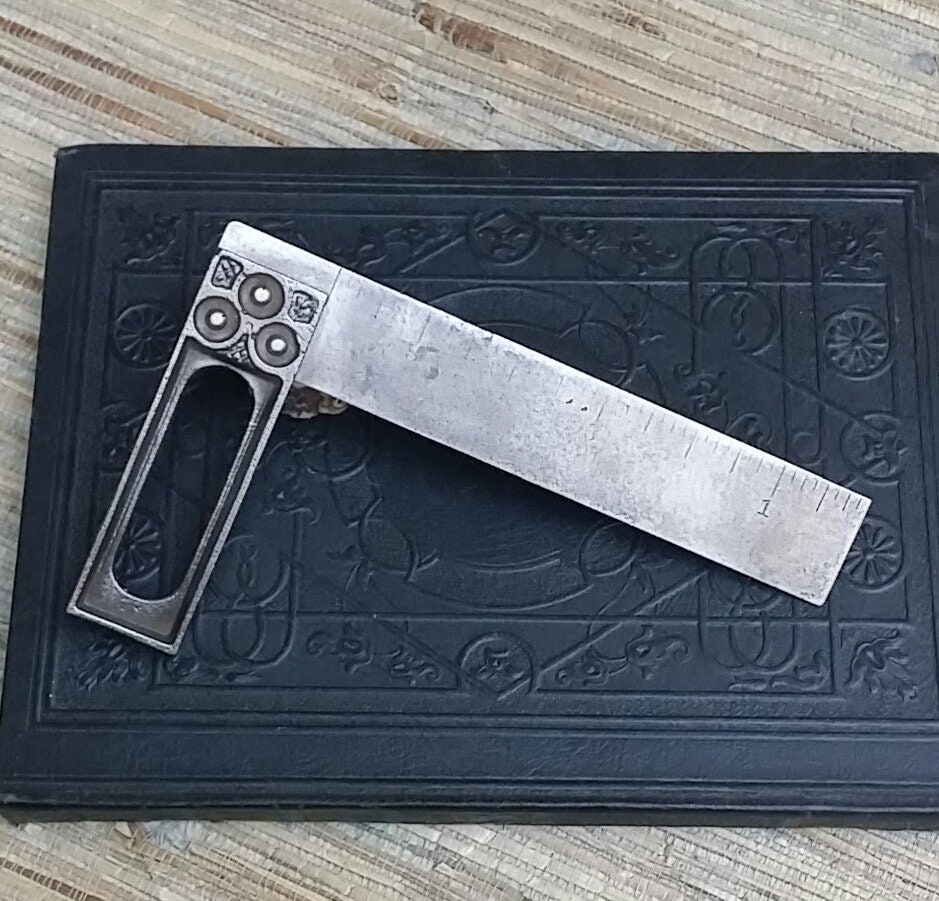
Place the anvil of the square against the edge of the working surface you wish to cut.If the angle between the shoulder and the blade is the same as that of the triangle, then the square is accurate. To test the accuracy of the shoulder, one may simply gauge the angle it makes with the blade against a 45° drafting triangle. If the two lines drawn are parallel with each other, then it can be said that the combination square is accurate. Once this is complete, turn over the square and draw a second line at least 1/32 in. Place the anvil of the square against this edge and draw a line on the outside edge of the blade. This task can be easily accomplished by first taping a white piece of paper to a board with a perfectly straight edge. Regardless of the job being undertaken, the first step when using a combination square is to check the square to ensure its accuracy. Additionally, contained within the head of the handle is a scriber used for marking measurements and a vial which may be used for measuring plumb and level. The handle contains an adjustable knob which allows it to move freely horizontally along the edge of the ruler so that it may be tailored towards any size job. The anvil is placed at a 90° angle between itself and the blade. It is therefore used for the measurement and layout of miters.

The shoulder is placed at an angle of 45° between itself and the blade. The handle is composed of two parts, a shoulder and an anvil. A combination square consists of a rue-type blade attached to a handle. Terminologyīefore using a combination square, one must first be familiar with the structure and terminology of the square itself. The versatility of the combination square insures its dominance over any other square in its class.
If you need a guide on how to use a spirit level, take a look at our information page.

It can also be used to determine level and plumb using its spirit level vial. Parts of a Combination SquareĪ combination square is a multi-use measuring instrument which is primarily used for ensuring the integrity of a 90° angle, measuring a 45° angle, measuring the center of a circular object, find depth, and simple distance measurements. View all combination squares from Johnson Level.

How to Use a Combination Square for Angles. The square has two main surfaces, one at right angles to the ruler axis and one at 45 degrees. The protractor has a blade that can be set at any angle relative to the axis of the ruler. The centre head has two legs situated at right angles to each other that straddle the ruler in such a way that one edge of the ruler bisects the right angle when the legs are in contact with a circular cylinder near one end, the edge of the ruler can be used as a guide for drawing a diametral line on the end of the cylinder. The latter consists of a steel ruler and three attachments that can slide and be clamped on it-namely, the centre head, the protractor, and the square head. There are two main types of machinist squares: the precision steel square, which resembles the try square in the Figure but is not graduated, and the combination square set. The tools shown in the Figure are carpenter’s squares. It is used by carpenters and machinists for checking the correctness of right angles, as a guide when drawing lines on materials before cutting, or for locating holes. Square, in measurement, device consisting of two straightedges set at right angles to each other. SpaceNext50 Britannica presents SpaceNext50, From the race to the Moon to space stewardship, we explore a wide range of subjects that feed our curiosity about space!. Learn about the major environmental problems facing our planet and what can be done about them! Saving Earth Britannica Presents Earth’s To-Do List for the 21st Century. Britannica Beyond We’ve created a new place where questions are at the center of learning. 100 Women Britannica celebrates the centennial of the Nineteenth Amendment, highlighting suffragists and history-making politicians. COVID-19 Portal While this global health crisis continues to evolve, it can be useful to look to past pandemics to better understand how to respond today. Student Portal Britannica is the ultimate student resource for key school subjects like history, government, literature, and more. This Time in History In these videos, find out what happened this month (or any month!) in history. #WTFact Videos In #WTFact Britannica shares some of the most bizarre facts we can find. Demystified Videos In Demystified, Britannica has all the answers to your burning questions. Britannica Explains In these videos, Britannica explains a variety of topics and answers frequently asked questions. Britannica Classics Check out these retro videos from Encyclopedia Britannica’s archives.







 0 kommentar(er)
0 kommentar(er)
